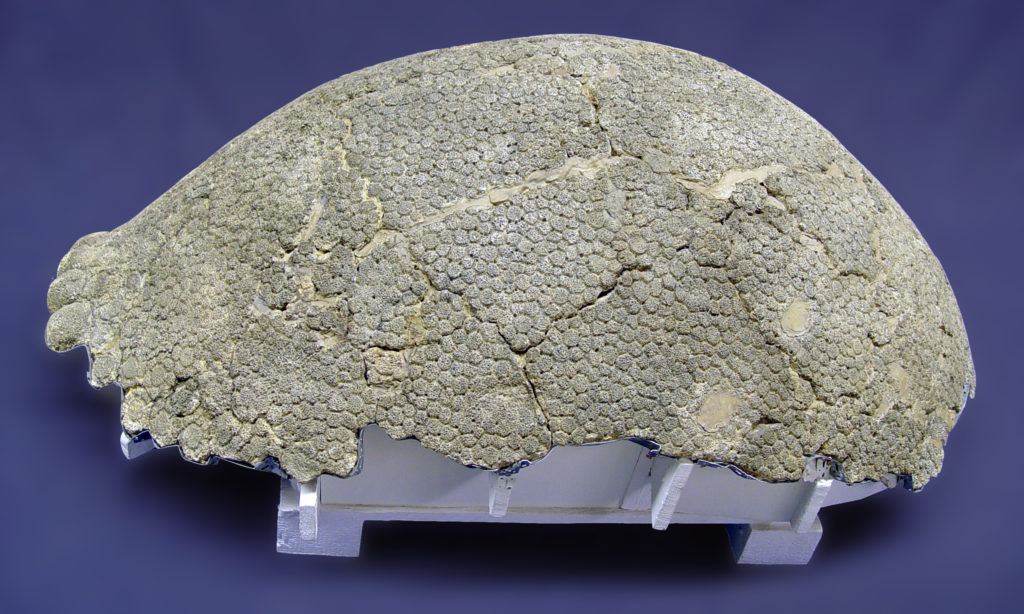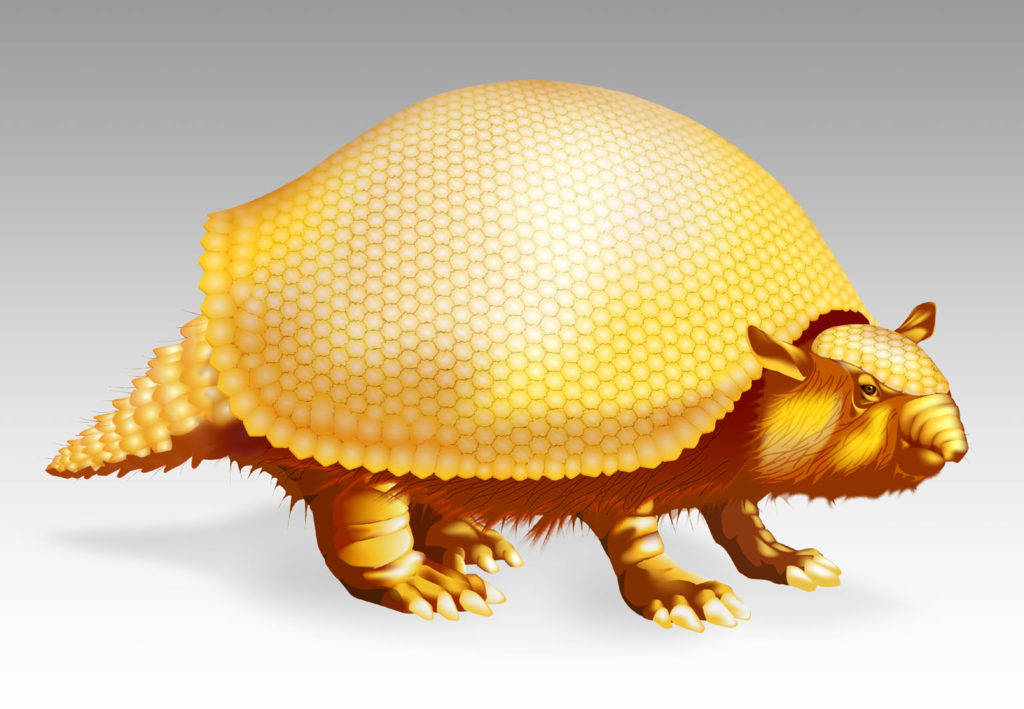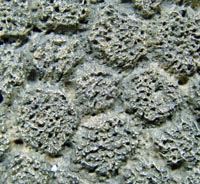Giant armadillo

The giant armadillo of the Bremen collection consists of the armour that is 140 cm in length and 85 cm broad as well as various bones of the skull, the vertebral column and the pelvic area. The armadillos belong to the most peculiar creatures of the ice-age. Their fossils have been collected in Argentina and the southern states of the United States, our specimen comes from Argentina. The surface of the body is protected by the massive armour, 70 % of it is preserved in the case of the Bremen specimen. The armour plates consist of single bones that are fused together to a polygonal moscaic. The skull is also armoured and the caudal even shows spines.

Only the bony armour of the animal makes up about 20 % of its own live weight. The exact locality can not be reconstructed any longer. The file in the catalogue of the collection says that the specimen came from Argentina in 1911.

It is for sure that this fossils was restorated and conserved in 1967 by the then-geological preparator of the Überseemuseum. The loose bone material has been consolidated and missing parts have been completed with cement. In recent days it is not possible to find out If the armour also underwent any treatment. About 1995 the armour was mounted on a foundation and its rim was fixed by a metal band to avoid further destruction of the heavy fossil. This is still the status of the specimen.
 The giant armadillos belong to the family Dasypodidae that are referred to the order Xenarthra (formerly called Edentata). They are closely related to sloths and ant eaters. The order Xenathra originated about 5 million years ago in South America. At this time there was no continental junction between North and South America and in South America there were only a few predators that could endanger the well-armoured animals. As soon as large predators where able to wander the south they started the decimation of the local South American fauna. About 70 % of the fauna was exterminated, including giant armadillos that had no chance since the armour was heavy but not massive enough to stand ground against the new predators.
The giant armadillos belong to the family Dasypodidae that are referred to the order Xenarthra (formerly called Edentata). They are closely related to sloths and ant eaters. The order Xenathra originated about 5 million years ago in South America. At this time there was no continental junction between North and South America and in South America there were only a few predators that could endanger the well-armoured animals. As soon as large predators where able to wander the south they started the decimation of the local South American fauna. About 70 % of the fauna was exterminated, including giant armadillos that had no chance since the armour was heavy but not massive enough to stand ground against the new predators.
References:
- Savage, R. J. G. & Long, M. R. (1986): Mammal evolution – an illustrated guide. – London, British Museum (Natural History): 259.
